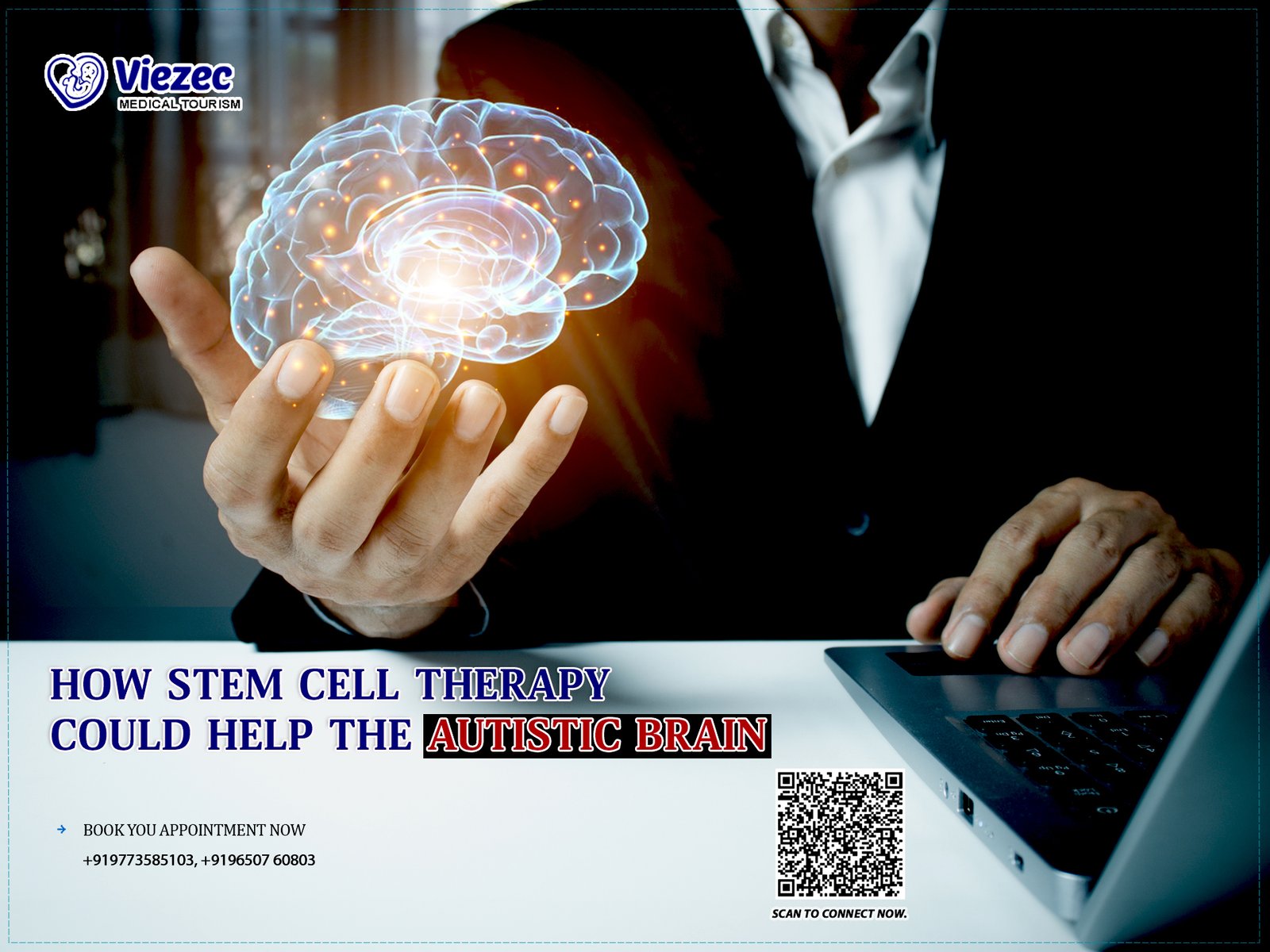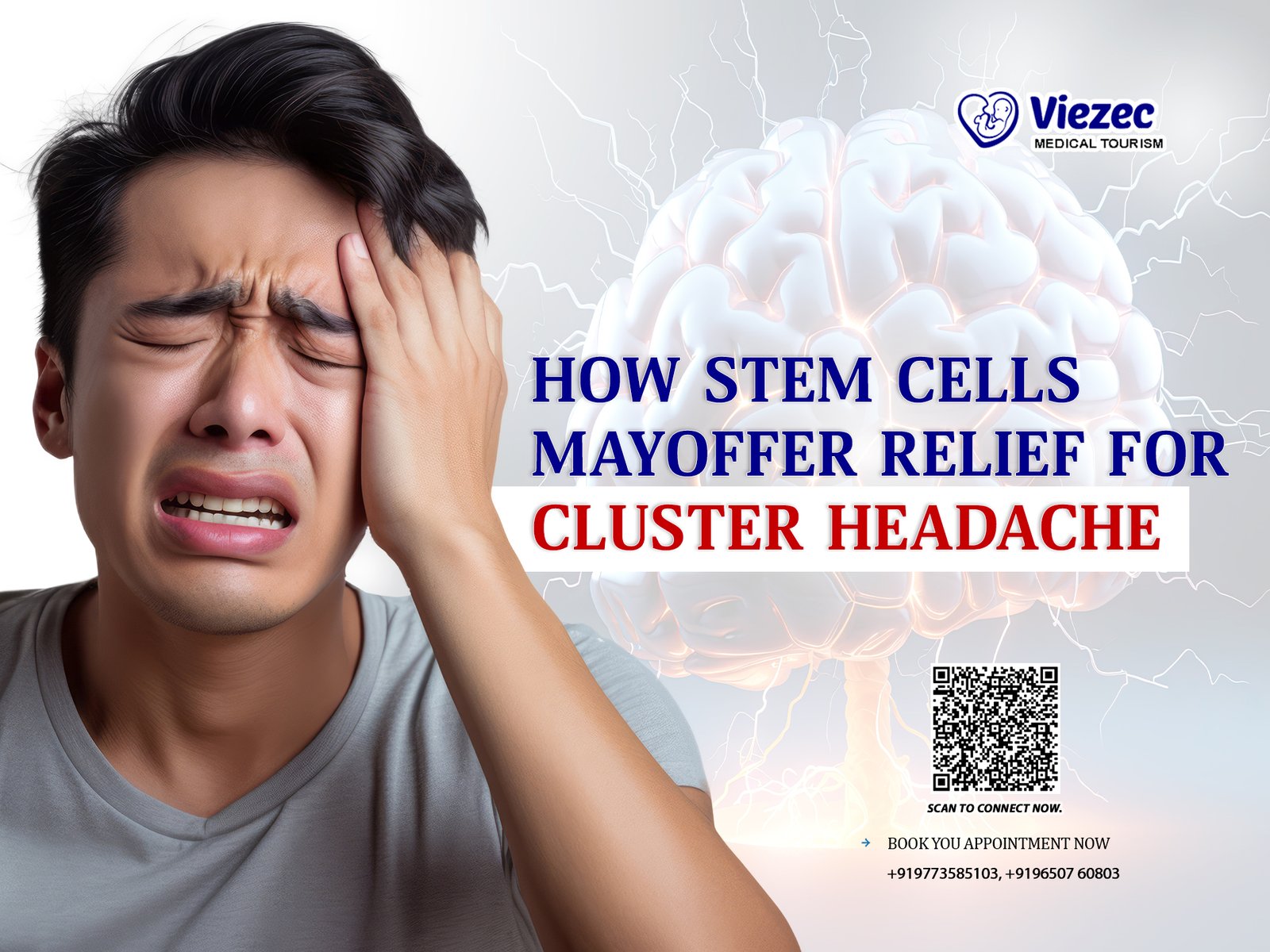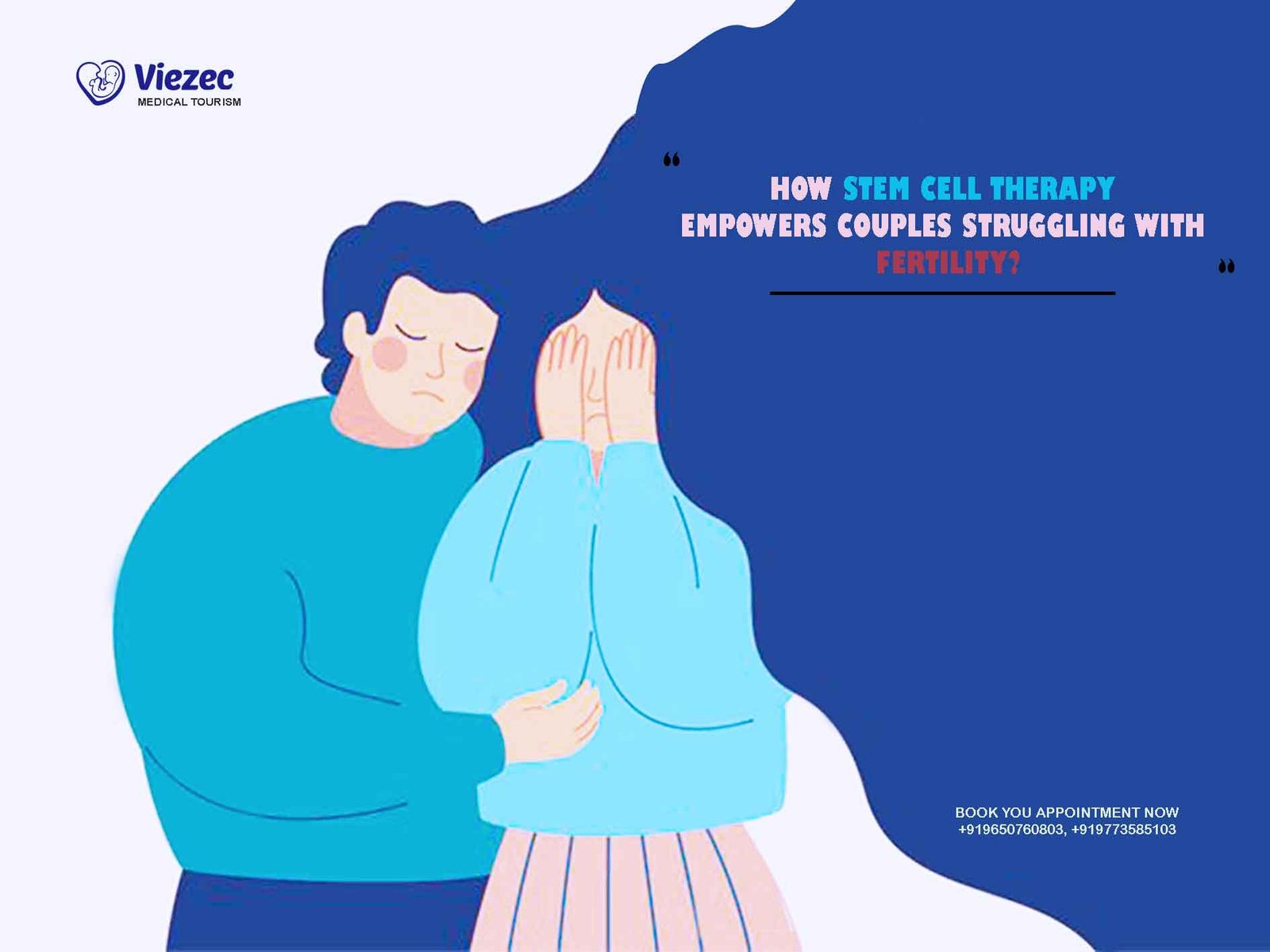KEY TAKEAWAYS
Autism Spectrum Disorder (ASD) is a complex and lifelong neurodevelopmental condition that affects how individuals communicate, behave, and interact with others. While there is no cure for autism, recent advances in medical treatments, particularly stem cell therapy, offer promising new avenues for improving outcomes. Stem cell therapy, which involves introducing regenerative cells into the brain, has the potential to address some of the underlying neurological challenges associated with autism. By promoting neural connectivity, reducing brain inflammation, and encouraging the growth of new brain cells, stem cells could help individuals with autism improve cognitive function, social skills, and overall quality of life. This article delves into the science behind stem cell therapy, the potential benefits for autistic individuals, and the current state of research, highlighting the transformative potential of this groundbreaking treatment.
What is Autism Spectrum Disorder (ASD)?
Autism Spectrum Disorder (ASD) is a developmental condition that affects how a person thinks, interacts with others, and experiences the world. Individuals with ASD often face challenges in communication, socialization, and behavior, which can range from mild to severe. While each person’s experience is unique, the core symptoms involve differences in how the brain processes information and interacts with the environment.
The Neurological Basis of Autism
The neurological foundation of autism is still being explored, but current research indicates that brain development in individuals with ASD is distinct. Key areas of the brain related to communication, socialization, and sensory processing can develop differently. Structural differences in the brain, such as changes in the size of certain brain regions or differences in neural connectivity, have been observed in individuals with autism. While we know that genetic factors, prenatal influences, and environmental factors contribute to these differences, the exact causes remain a subject of ongoing research.
The brain’s ability to form connections, process sensory information, and engage in social behavior is affected in individuals with autism. These differences in brain development can lead to the hallmark signs of ASD, including challenges with social interaction, difficulty understanding verbal and nonverbal cues, and a heightened sensitivity to sensory inputs.

Switch to relief.
It’s fast and easy.
Skip the hassle and start healing. Explore safe, personalized stem cell therapy options—transparent, quick, and stress-free.
Current Treatment Options for Autism
While there is no cure for autism, many treatments and therapies aim to improve symptoms and quality of life. These treatments focus on enhancing social skills, communication, and cognitive abilities, helping individuals with ASD lead fulfilling lives. Let’s look at the primary options currently available.
Behavioral and Therapeutic Approaches
Behavioral therapies are foundational for many individuals with autism. Applied Behavior Analysis (ABA) is one of the most widely used approaches. ABA focuses on teaching skills through reinforcement and structured learning. These therapies aim to enhance communication, socialization, and daily living skills by focusing on specific behaviors and encouraging positive changes.
In addition to ABA, speech therapy and occupational therapy are often part of the treatment plan. Speech therapy helps individuals with autism improve their verbal communication, while occupational therapy focuses on building fine motor skills, self-care abilities, and sensory integration. Together, these therapies work to improve the core challenges faced by individuals with autism, helping them function more independently in everyday life.
Pharmacological Treatments for Autism
Pharmacological treatments may be used to manage certain symptoms associated with autism, such as irritability, anxiety, and hyperactivity. Medications like selective serotonin reuptake inhibitors (SSRIs) or atypical antipsychotics can help control these symptoms, but they don’t address the underlying causes of autism. These medications are typically prescribed alongside behavioral therapies to help manage secondary symptoms and improve overall functioning.
While medication can help control certain behaviors, it is not a stand-alone solution for autism. The combination of medication and therapeutic interventions tends to produce the most favorable outcomes, enhancing social engagement and reducing behavioral challenges.
Exploring Stem Cell Therapy
Stem cell therapy has emerged as an exciting frontier in the treatment of various neurological and developmental disorders. Although still in the early stages of research, stem cells offer a potential pathway for addressing some of the core challenges faced by individuals with Autism Spectrum Disorder (ASD). The premise of stem cell therapy is that by introducing new, healthy cells into the body, we may be able to repair damaged brain tissue, improve neural connectivity, and help the brain function more efficiently.
What Are Stem Cells and Their Functions?
Stem cells are special cells with the remarkable ability to develop into different types of cells in the body. They can transform into muscle cells, nerve cells, or even blood cells, depending on their environment and needs. This regenerative capability makes stem cells particularly valuable for repairing or replacing damaged tissue. In the case of autism, stem cells could potentially help by regenerating neural tissue, enhancing the function of existing neurons, and promoting the growth of new neural pathways.
For individuals with autism, stem cells may offer a way to overcome certain challenges caused by impaired neural development or connectivity. By introducing stem cells into specific areas of the brain, we might be able to encourage the regeneration of nerve cells, improve communication between brain regions, and ultimately enhance social, cognitive, and emotional skills.
Types of Stem Cells Used in Therapy
There are several types of stem cells that are being explored for therapeutic use. Each type has unique properties that may be more or less suitable for treating different conditions, including autism.
-
Embryonic Stem Cells (ESCs): These cells are harvested from early-stage embryos and can transform into virtually any cell type in the body. ESCs hold the greatest potential for regenerative medicine, but they are also controversial due to ethical concerns surrounding their use.
-
Adult Stem Cells: These cells are found in various tissues throughout the body, including bone marrow, fat, and the brain. While adult stem cells are more limited in the types of cells they can become, they are less controversial and easier to obtain. These cells have already shown promise in treating other neurological conditions, making them a potential option for autism therapy.
-
Induced Pluripotent Stem Cells (iPSCs): iPSCs are adult cells that have been reprogrammed to behave like embryonic stem cells. These cells have the ability to differentiate into various cell types, including brain cells, and can be obtained without ethical concerns. iPSCs are a promising alternative to ESCs and are gaining increasing attention in medical research.

Advanced Stem Cell Care. Designed for You.
From joint pain to chronic illness, we tailor treatments with safety and transparency, helping you heal faster and live better.
Mechanisms of Stem Cell Therapy for Autism
Stem cell therapy works by addressing several key aspects of brain development that are impacted in autism. One of the primary ways stem cells can help is by improving the connectivity between neurons, enhancing the function of the immune system, and reducing brain inflammation. Together, these mechanisms offer the potential to restore or improve the function of the brain, potentially reducing some of the core symptoms of autism.
Enhancing Neural Connectivity
In autism, the brain’s communication network may not function as efficiently as it should. Neural connections that are crucial for social interactions, language development, and sensory processing may be underdeveloped or impaired. Stem cells can promote the growth of new neural connections by stimulating the development of neurons and synapses. These new connections could improve communication between brain regions, helping individuals with autism better process and respond to stimuli from their environment.
How Stem Cells Support Brain Function
Stem cells are believed to release growth factors that support the growth of new neurons and synapses, which are essential for proper brain function. These growth factors may also help to protect existing neurons from damage. By providing nourishment and promoting neural regeneration, stem cells could improve the brain’s ability to learn, adapt, and function, ultimately leading to better cognitive and social outcomes for individuals with autism.
Modulating Immune System Activity
Emerging research has suggested that immune system dysfunction may contribute to the development or severity of autism. In some individuals, the immune system may cause chronic inflammation in the brain, which can interfere with neural development and functioning. Stem cells have the ability to modulate immune responses, potentially reducing inflammation and supporting the brain’s overall health. This anti-inflammatory effect could be key to improving brain function and reducing some of the neurological symptoms of autism.
Potential Benefits of Stem Cell Therapy for Autistic Individuals
While the field of stem cell therapy for autism is still in its infancy, the potential benefits are vast. Stem cells could potentially offer improvements in cognitive function, social skills, and overall brain health. By targeting the underlying neurological issues that contribute to autism, stem cell therapy has the promise of helping individuals with autism lead fuller, more independent lives. Let’s explore some of these exciting possibilities.
Improving Cognitive and Behavioral Outcomes
One of the most exciting potential benefits of stem cell therapy for autism is the improvement in cognitive abilities and behavioral outcomes. By promoting the growth of new neural pathways and improving existing brain functions, stem cells could help individuals with autism process information more effectively. This could lead to enhanced learning abilities, better memory retention, and improvements in problem-solving skills.
Behavioral changes could also be observed as a result of stem cell therapy. As neural connectivity improves, individuals may experience fewer social challenges, including difficulty interpreting social cues or engaging in meaningful conversations. Improved cognitive function could also lead to better adaptive behaviors, allowing individuals with autism to handle daily tasks more independently.
Reducing Inflammation in the Brain
Another significant benefit of stem cell therapy for autism is its potential to reduce chronic inflammation in the brain. In many neurological disorders, including autism, persistent inflammation can disrupt normal brain development and contribute to symptoms such as sensory processing issues and social difficulties. By modulating immune system responses, stem cells may help reduce inflammation in the brain, improving overall brain function.
Reducing brain inflammation could also prevent further neural damage, creating an environment more conducive to healthy brain development. This could help alleviate some of the core symptoms of autism and improve long-term outcomes for individuals undergoing stem cell therapy.

Start Your Path to Recovery. It’s Simple and Safe.
Skip delays and discover trusted stem cell therapies—personalized care that’s transparent, effective, and designed for your needs.
What Does Current Research Say About Stem Cell Therapy for Autism?
Stem cell therapy is still an emerging field, and while the results are promising, much of the research is in its early stages. Several clinical trials are exploring the safety and efficacy of stem cell treatments for autism. While some studies have shown improvements in behavior, cognitive function, and social interaction, more research is needed to confirm the long-term benefits and establish standardized protocols for treatment.
Clinical Trials and Success Stories
Several clinical trials are currently investigating the use of stem cell therapy for autism, with some preliminary results showing promise. In one study, children who received stem cell injections demonstrated improvements in communication, socialization, and adaptive behaviors. While these results are encouraging, it’s important to note that these studies are small-scale and require further investigation to determine the full extent of stem cell therapy’s effectiveness in autism treatment.
There are also anecdotal success stories from families who have pursued stem cell treatments abroad. Some parents report significant improvements in their children’s ability to engage socially, communicate, and manage behavioral challenges. However, these individual success stories need to be examined in a clinical context to assess the broader applicability of these therapies.
Challenges and Ethical Considerations in Autism Treatment
Despite the promising potential of stem cell therapy, there are several challenges and ethical concerns associated with its use in autism treatment. One of the main challenges is the need for more comprehensive clinical trials. While early results are encouraging, more large-scale, controlled studies are necessary to fully understand the benefits and risks of stem cell treatments.
Ethical concerns, particularly related to the use of embryonic stem cells, continue to be a point of debate. While adult stem cells and induced pluripotent stem cells (iPSCs) are being explored as alternatives, the ethical implications of using certain types of stem cells remain a concern for many. Additionally, stem cell treatments can be expensive, and access to such therapies may be limited, making it essential to weigh the potential benefits against the costs and availability.
Make an informed Decision
Stem cell therapy holds great promise for helping the autistic brain by promoting neural regeneration, reducing inflammation, and improving cognitive and social outcomes. While current research is still in the early stages, the potential benefits are clear. With further studies and advancements in stem cell technology, we may see more effective treatments for autism in the future. However, it is important to approach stem cell therapy with caution, considering the ongoing research, ethical issues, and costs involved.
As we continue to explore and refine these therapies, we can look forward to a future where stem cell treatments may become a vital tool in improving the lives of individuals with autism, providing them with new opportunities for growth, development, and social engagement.
FAQs
Q1: How does stem cell therapy for autism work?
Stem cell therapy works by reducing inflammation and repairing damaged neural tissues in the brain. It aims to improve behavior, communication, and social interaction in individuals with autism.
Q2: What is the age limit for stem cell therapy in autism?
Most clinics accept children aged 3 to 18 for stem cell therapy, but age criteria can vary. A medical evaluation is necessary to determine eligibility based on health and development.
Q3: How much does stem cell therapy for autism cost?
The cost typically ranges from $5,000 to $20,000 or more depending on the clinic, country, and treatment protocol. Additional expenses may include travel, accommodation, and follow-up care.
Q4: What is the success rate of stem cell therapy for autism?
Reported success rates vary, with many studies and clinics claiming 60%–80% improvement in symptoms. However, results are not guaranteed and depend on individual responses.
Q5: How can I find a reliable stem cell therapy clinic for autism?
Look for clinics with licensed physicians, transparent protocols, and published results. Patient testimonials, certifications, and international accreditations can also help verify clinic credibility.









